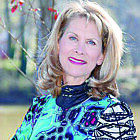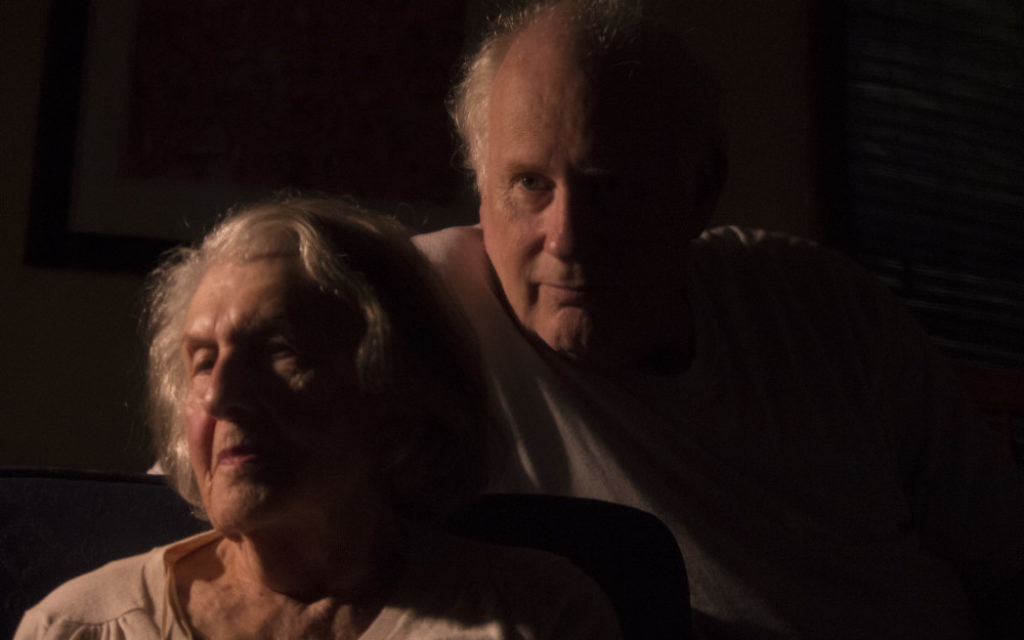Chai Style Art: KSU Art Professor Creates and Inspires
Kennesaw State University’s Daniel Sachs is a treasure-trove of Judaic art imagery and its relationship to Jewish, Arabian and Victorian art. Sachs completed his doctorate in art history at Case Western Reserve, specializing in 19th century American Romantic landscape painting.
His artwork includes elaborate ketubot (wedding contracts), self-portraits and stunning scenes of Jerusalem.
A former New Yorker and a member of Chabad of Cobb, he came to Atlanta from a five-year teaching position at the Savannah College of Art and Design in Savannah. It’s easy to see why his courses are so popular with students as he makes art come to life with his wisps of wild white hair flowing amid his tales of ancient times with a slice of Jewish tradition on the side.
Get The AJT Newsletter by email and never miss our top stories Free Sign Up

—
Jaffe: Describe your background and how you got a jump-start in art.
Sachs: I have an illustrious family. My father, Mendel, was a descendant of Rashi (the famous French rabbi and renowned biblical scholar) and an important Ph.D. physicist, specializing in relativity theory, who carried on (actually completed) some of Einstein’s work, including his unified field theory. My younger brother, Michael, is the Northeast regional director of AIPAC; my older brother, Robert, is a Ph.D. in philosophy and a tai chi/yoga instructor. My sister is a writer. My mother is a Holocaust survivor. Basically, we are a bunch of very creative renegades.
Jaffe: So are you more of a scientist or an artist?
Sachs: The mental process that informs both is closely related. With a creative mind, one daydreams about ideas and problem solving. There is art in physics and vice versa.
Jaffe: So how does a child get interested in Judaic art?
Sachs: As a youth, I was into forging famous signatures … exploring pen-and-ink techniques and playing with color. Visiting a Judaic store in Buffalo, I was asked if I could do calligraphy for my first ketubah, and the rest is history. I have custom-designed ketubot from the East Coast to Alaska … mostly consisting of intricate Victorian borders or Arabian design. The text is primary, so I pick elaborate designs to enhance the text, not play with it. Look closely and you’ll see areas that are personalized for the bride and groom. Here’s a pizza, the Ohio State logo, a cruise ship, cheese fries, the Knickerbocker Hotel and ballet slippers woven in but not detracting from the sacredness of the text of the world’s oldest valid legal contract.
Jaffe: How long does it take you to complete one, and how much does it cost?
Sachs: Anywhere from 100 to 150 hours and in the range of $2,000 and up, depending on the intricacy of the ornamentation. Note the handwritten text in Hebrew and English and that the bride’s name is in a different color than the groom’s.

Jaffe: Your Jerusalem series is breathtaking. Describe the process.
Sachs: Back in the early ’80s, when I was creating a wide variety of works, a New York gallery owner advised me to get more focused and create a series. Having been to Israel three times, I undertook 10 original drawings/paintings in colored pencil on toned paper of the Old City: the Mount of Olives, Absalom’s Tomb, David’s City, the Old Jewish Quarter (before 1948). Some of these works reside in private collections; a few are still for sale. They are done on my trademark burgundy paper (or blue for a night scene), then glazed with colored pencil in many layers … actually in the tradition of the Renaissance masters.
Jaffe: Your self-portraits are varied and dramatic.
Sachs: Again, in the style of the old masters, I also use a Caravaggio style, which results in a very emotional feeling by using black fabric and a mirror and building up the rich color with abundant layering called glazing.
Jaffe: Your collage paintings are rather startling. Like a rock album cover?
Sachs: A few people have made the same observation. I call them conglomerates. My black-and-white “Eyes Have They” is a collection of famous eyes from Mao to Hitler and the Beatles. Look very closely to see whose eyes you can recognize. I start in the middle, then work outwards to fill all the negative spaces.
Jaffe: Describe your classroom style.
Sachs: Never dull or boring. I believe that art history should be informative, intriguing and entertaining. Every lecture is a performance that includes histrionics, sound effects, colorful anecdotes, the history of ideas and images, and the character of each period’s culture. In my course “Historic Studio Practices,” I have students study a historical period and then teach them how to paint like the masters of that time. They use art supplies that are specific to the era. They start with a wooden panel and create an oil painting from a preliminary drawing using a white pencil only to the almost-finished oil. I am told this is the only course of its kind in the U.S. I teach a group of periods that include Italian and Dutch Baroque painting, Italian Renaissance, Romanticism, Caravaggio and the Spaniards.
Jaffe: What’s next?
Sachs: I am curating an exhibition at Kennesaw State University’s Zuckerman Museum of Art that will feature Romantic American landscape paintings from KSU’s permanent collection. It will run from June to August. In conjunction with that, I will also complete a collection of progressive panels demonstrating what stages lead up to a completed oil painting in the Renaissance tradition. Spectators will internalize the process.
And, of course, my students are the most important mission. Can you believe that KSU has grown to a student body of over 30,000 since our merger with Southern Polytechnic? It makes your head spin!





comments